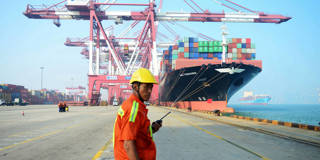OnPoint Subscriber Exclusive
The Big Picture brings together a range of PS commentaries to give readers a comprehensive understanding of topics in the news – and the deeper issues driving the news. The Big Question features concise contributor analysis and predictions on timely topics.

The Chinese Overcapacity Puzzle
Several developments in recent years, from sustained renminbi appreciation to increasingly aggressive Western tariffs, should have eroded China’s global manufacturing dominance, but have not. Why has China’s share of global manufacturing exports continued to rise, and what might turn the tide?